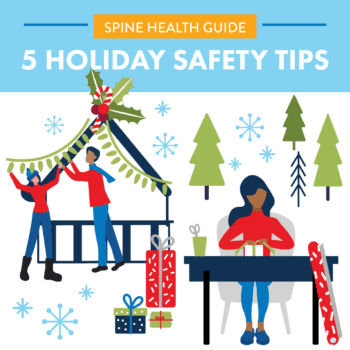Flatback syndrome is a condition where the normal curve in the lower spine flattens, causing the person to lean forward. This can lead to pain and difficulty standing up straight and walking.
Common Causes
- Degenerative disc disease: When discs break down due to aging or injury.
- Spinal surgery: Previous surgeries can sometimes lead to flatback syndrome.
- Ankylosing spondylitis: A type of arthritis that can cause the spine to become stiff and lose its natural curve.
- Poor posture: Consistently bad posture can cause the spine to flatten over time.
Symptoms
- Difficulty standing up straight.
- Pain in the lower back.
- Fatigue, especially after standing or walking for long periods.
- Stiffness in the back.
- Pain that radiates to the hips or thighs.
Diagnostic Tests
- Physical exam: The doctor checks your posture, range of motion, and muscle strength.
- X-rays: Pictures of the spine to see the alignment and any loss of the natural curve.
- MRI or CT scan: Detailed images of your spine to look for any other issues.
Treatment Options
Non-Surgical:
- Physical therapy: Exercises to strengthen back muscles and improve flexibility.
- Medications: Over-the-counter pain relievers or prescription medications.
- Bracing: Intermittently wearing a lumbar corset might provide temporary relief and help support the spine and improve posture. Muscles are often made weaker with regular brace use and can make the problem worse.
- Walking sticks: These can help maintain a more upright posture to help with walking.
Surgical:
- Spinal fusion: Surgery to join two or more vertebrae to correct the spine’s alignment.
- Osteotomy: Cutting and reshaping the bones to restore the natural curve of the spine, which then is combined with fusion.
Common Conditions That Can Cause Similar Symptoms
- Kyphosis: An excessive outward curve of the spine, causing hunching.
- Scoliosis: A sideways curvature of the spine.
- Spinal stenosis: Narrowing of the spaces within the spine, putting pressure on the nerves.
When to See the Doctor
- If you have difficulty standing up straight.
- If you experience persistent back pain.
- If the pain interferes with your daily activities or sleep.
- If you notice a change in your posture.
What to Ask the Doctor
- What is causing my flatback syndrome?
- What treatment options are available?
- How long will it take to recover?
- What are the risks and benefits of surgery?
- How can I prevent further complications?
Home Remedies for Mild Symptoms
- Exercise: Gentle exercises can help strengthen back muscles.
- Stretching: Regular stretching can relieve muscle tension.
- Pain relief: Over-the-counter pain relievers like ibuprofen or acetaminophen can help with pain.
- Proper posture: Maintain good posture to reduce muscle strain.
- Heat or ice therapy: Applying heat or ice can reduce pain and swelling.
Understanding flatback syndrome can help you know when to seek medical advice and what questions to ask your doctor. Early detection and treatment can help manage the condition and improve your quality of life.



